- Aleph
- Anna Gat
- Ariel LeBeau
- Austin Robey
- David Blumenstein
- David Ehrlichman
- David Kerr
- Devon Moore
- Dexter Tortoriello
- Drew Coffman
- Drew Millard
- Eileen Isagon Skyers
- FWB Staff
- Gaby Goldberg
- Greg Bresnitz
- Greta Rainbow
- Ian Rogers
- Jessica Klein
- Jose Fernandez da Ponte
- Jose Mejia
- Kelani Nichole
- Kelsie Nabben
- Kevin Munger
- Khalila Douze
- Kinjal Shah
- Kyla Scanlon
- LUKSO
- Lindsay Howard
- Maelstrom
- Marc Moglen
- Marvin Lin
- Mary Carreon
- Matt Newberg
- Mike Pearl
- Mike Sunda (PUSH)
- Moyosore Briggs
- Nicole Froio
- Original Works
- Ruby Justice Thelot
- Ryne Saxe
- Simon Hudson
- Steph Alinsug
- The Blockchain Socialist
- Willa Köerner
- Yana Sosnovskaya
- Yancey Strickler
- iz

Thu Mar 03 2022
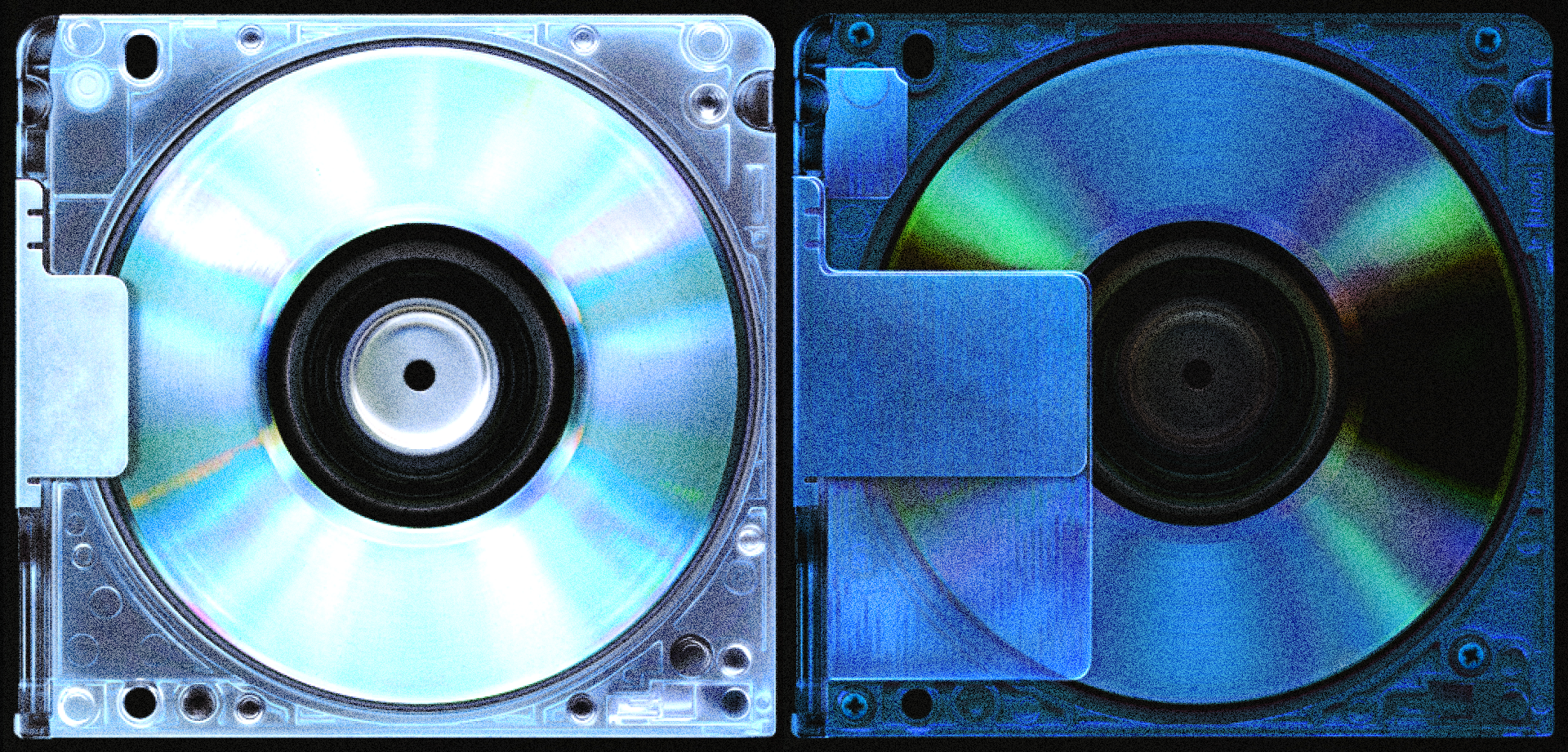
Ever since A. Michael Noll’s and Frieder Nake’s challenged critics and casual observers alike to consider the value of virtual objects, the relationship between digital artworks and their physical representations has only grown more complicated. One of the most compelling aspects of technology-focused creative work is its capacity to expose the material world’s constraints and limitations; in the best of cases, it will also expose where technology falls short. The artist and designer David Rudnick, meanwhile, offers another proposition: respecting the unique nature of the virtual and physical realms, while creating work that purposefully co-exists between the two.
It’s possible to view Rudnick’s practice as a graphic designer and creative collaborator to artists like Evian Christ and RL Grime as secondary to his work as a theorist and thinker. His custom typefaces and corresponding graphic systems, for example, seem to interrogate the nature of visual communication itself. His staggeringly intricate Tomb Series and Tomb Index, however, feels like the ideal marriage of his capacities as a visual artist and author of conceptual models.
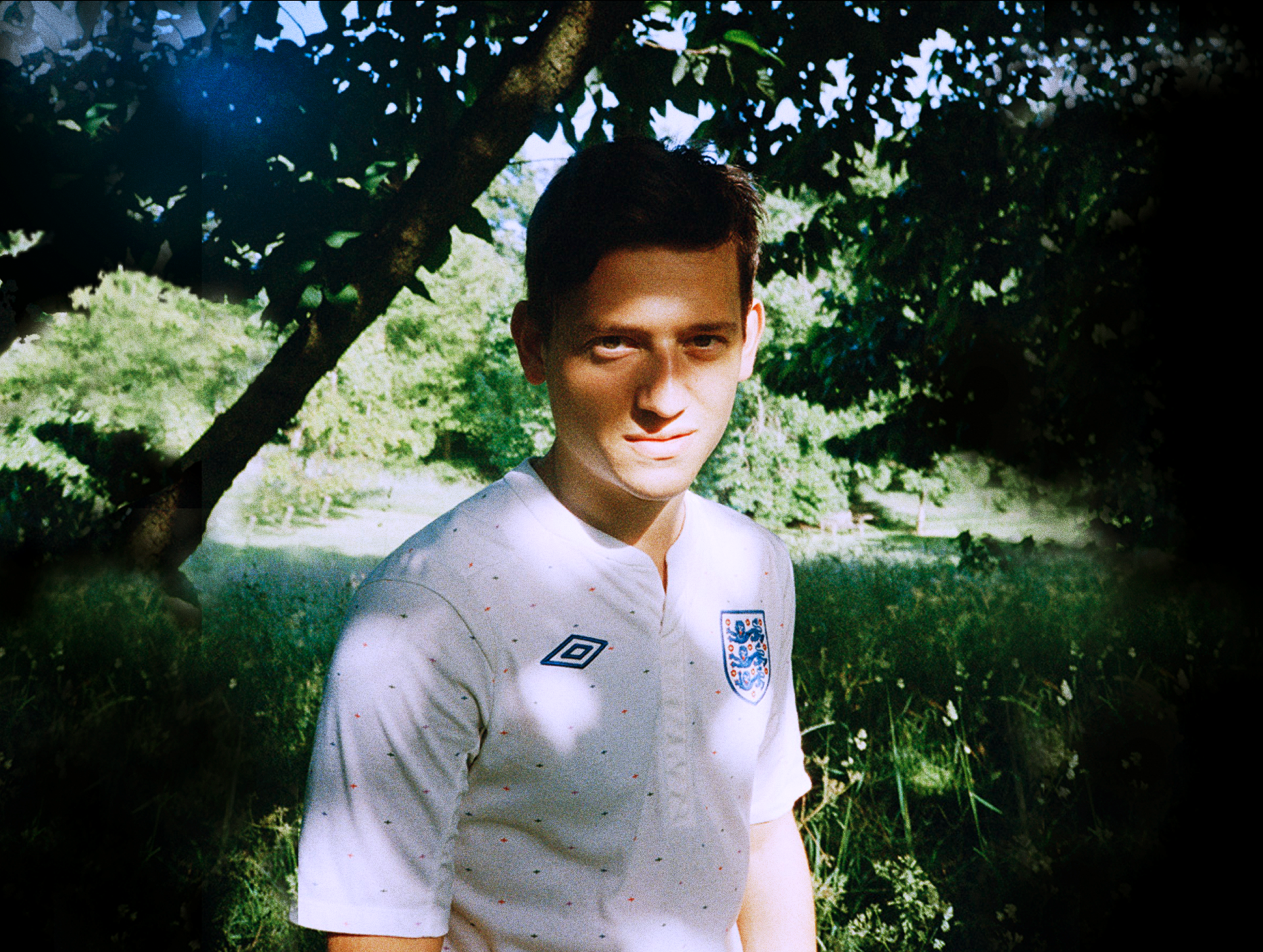
Tombs, the individual artworks at the heart of it all, are 177 drawings of physical data storage devices that are divided into eight sub-collections called Houses. The Tombs will cross mediums both digital and physical to exist within the pages of Tomb Index, a 240-page book that pushes the boundaries of contemporary print production, and as a series of NFTs, to be released across multiple platforms and blockchains.
The results of this massive undertaking can come across as overwhelming and knotty, but they’re not without purpose; the project’s complexity is an open invitation to grapple with what it means to ascribe value to digital and physical objects in a world that is becoming increasingly virtual. The book, in particular, is meant to help those engaging with the project navigate its layers, offering details about each artwork, the corresponding Houses they’re organized into, and how those Houses relate to the project’s various on-chain partners, ranging from Zora and Folia to artists like M.I.A, Evian Christ, and Holly Herndon and Mat Dryhurst.
In February, Friends with Benefits celebrated the launch of Tomb Series, along with the now-closed presale of the Tomb Index, by hosting a panel discussion moderated by Head of Brand Lindsay Howard, featuring Rudnick and some of his collaborators on the project, including Eric Hu, Itzel Yard, and Jacob Horne. We have reproduced that conversation, which details the conceptual and technical process of bringing Tombs to life, below.
This transcript has been edited for length and clarity by Emilie Friedlander and Drew Millard.
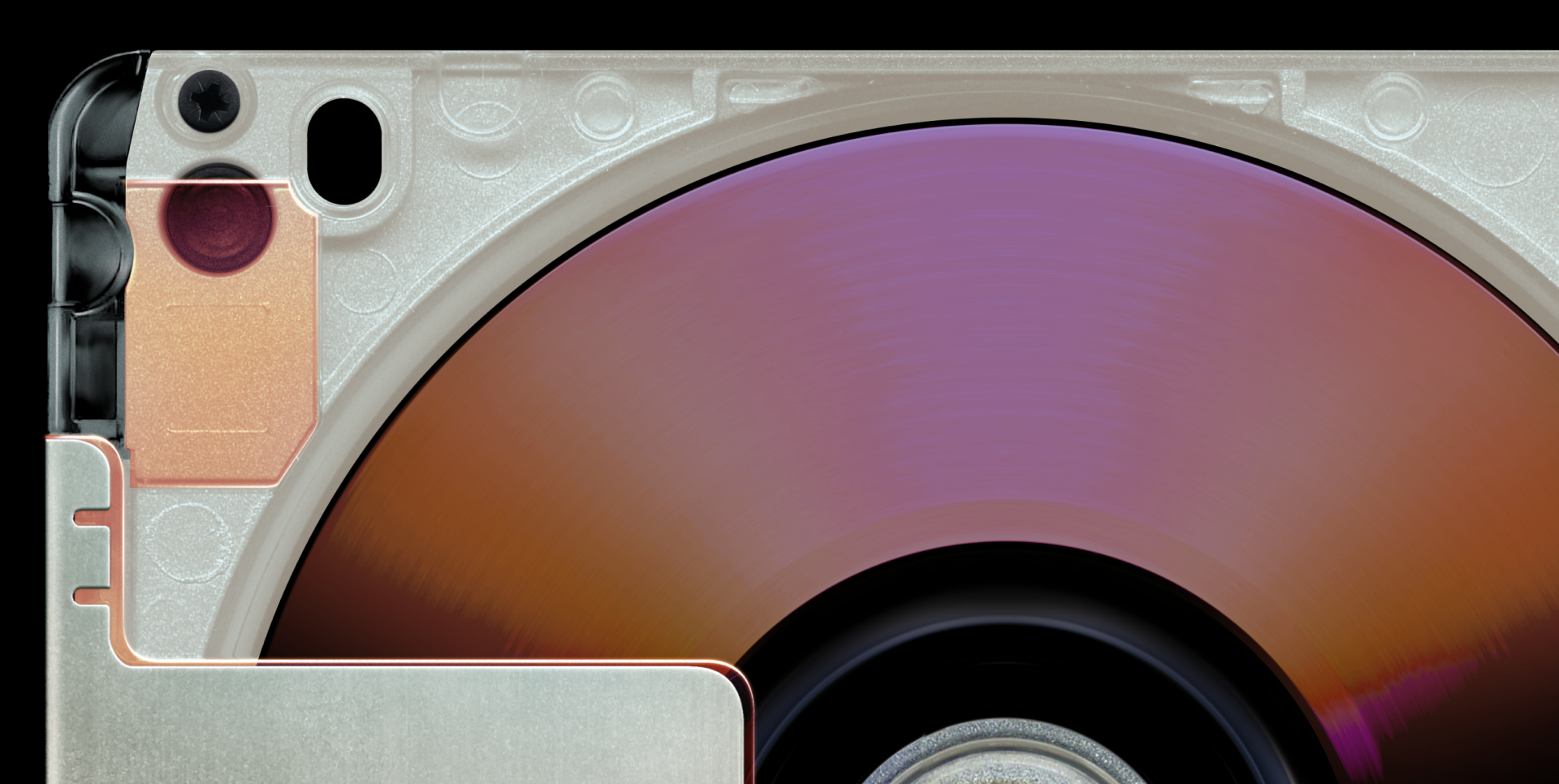
Lindsay Howard, Head of Brand at FWB: David, can you tell us about Tomb Index and how it connects to the bigger Tomb Series project?
David Rudnick, artist: I know it's somewhat unusual to start a project in this space — a project that will have an on-chain component — with a book. Basically, I think it's an opportunity to show the difference between how works can exist now as a conceptual, printed body of work as well as on-chain. People who are ordering the book will be able to see the entire Tomb Series, understand the structure, read a bit more about the houses, and learn about the mechanics.
Many projects front-run a lot of things by building flashy sites where you're almost making an investment prospectus. I wanted to approach it in a completely different way, so that the work is at the foreground, and to give people the ability to spend time with the project, the ideas around it, and some of the texts that inspired it.
Lindsay: It’s been exciting to see some of the ambitious NFT projects over the last year that are interacting with the blockchain directly as a medium. Jacob, we all saw David enter the NFT space last year around this time on Zora. What are some developments you've seen since then with Zora as a protocol? How are you collaborating with artists right now?
Jacob Horne, co-founder of Zora: I actually think the Ronin collaborations in Tomb Series are a nice way to illustrate what's happened over the past year. One of the most intriguing aspects of The Tomb Series, to me, is that it is kind of pan-platform and pan-medium: It's offline, it's online; it’s on-chain, it’s off-chain. I don't think there are many examples where we've seen a single body of work across all of those mediums simultaneously. And I feel like that helps create literacy around the question of what each of these mediums affords us. What's unique to them? What's the difference between this book versus the NFT that I may or may not own? What does this platform afford me versus another one?
We've been going through a period of collective discovery over the past year, where a lot of artists were minting their first NFTs. People have been experimenting and being like, “Okay, what does it mean for me to mint one of my prior works, or a famous image that I've had in my catalog for a while, versus a new one that's native to the medium?” Now, through this project, we can have a bird's eye view of what’s going on.
Lindsay: Eric, your Monarchs pushed the possibilities of generative work and went outside the traditional platform approach with your own custom display. I'm curious what you're thinking about now, and about the collaboration that you've developed with David.
Eric Hu, artist: As you said, this past year has been pretty transformational for a lot of folks. I'm shocked at how fast I went from, “Oh, what's an NFT?,” to launching Monarchs. But I think that sometimes outside observers in the space who don’t fully know who we are as designers might lose out on important context. I've been fortunate to have known David for a decade. For me, Tomb Series feels like a culmination of the ideas and practices that he's had, as well as his point of view for what design is and what culture should be, and the juxtaposition of these forces. When you see the individual MiniDiscs, you see bits and artifacts that relate to the years of the work he's put in, but also things that are completely new.
It's rare to see somebody who just doesn’t see the limitations of the mediums in which they work. When I make a website, I very much think, “[I am making] a website.” But David thinks about things in a much broader and more masterful sense, where these larger ideas are always going to be bigger than the mediums that contain them. I don't want to say that NFTs are the end-game, but it was almost like these ideas were waiting for the perfect home. It's rare to see somebody be able to innovate so much — where something they've done is completely different from anything they've previously done, but so clearly from the same person. That's just such a privilege and a pleasure to witness, both as a friend and as a colleague.
David: I just want to say thank you. That was the most insightful and generous read of my practice I think I've ever received. I don't know what to say right now. I'm very moved. Thank you so much.
Eric: I'm just telling the truth, man. It's nothing.

Lindsay: David, I love how deeply collaborative The Tomb Series is — you're looking at the space holistically and weaving together a lot of different technologies and resources and narratives. Itzel, you’ve been such a strong community member in the NFT space. You have participated in a number of collaborations and have a very strong practice yourself — what has the collaborative process been like with David?
Itzel Yard, artist: First of all, I'm very honored to be here. You're all OGs in digital art, and because of NFTs, I’ve been able to spend a lot more time with your work. Before I got into this community, I was focused on my own world, my own dimension; now, I’m learning more about artists who have been experimenting with these technologies for years.
I loved David's work when he first showed me the drafts. I felt connected to it because I loved the style, the retro vibes, the feeling of an RPG, where there’s more than what’s on the surface.
I love gaming, and I love the idea of finding different secrets and checkpoints or quests. It feels very much like how we're living right now: We're all archiving our memories and our art, and other people are interested in keeping it. Before, many of us weren't able to even collect one piece of digital art, but we were saving it, right?
I've always created stories and I share a lot of my art because I want to preserve it, and I want it to outlive me and the people that are around during this time. Maybe in the future, someone will ask about me or about David and see what we did, what we left behind — the treasures. I see Tomb Series as a historic project that I'm really proud to be part of.
David: This project was the first time that Itzel and I have had a chance to work together, and I’m so glad we were able to make it happen. Talking about the idea of gaming, or viewing it through this framework of the way that items in games, or relics, have the values of property —
I think everyone who worked on this project started to realize that people who have practices inside Web3 are manifesting quite different ideas of how we build connections, and what the value of the items are. I think that’s a really [interesting] aspect of how to approach projects on-chain: to have the chance to have other people bring their interpretation of the work. I’m giving up agency in that all the Ronin collaborators, they deploy the work themselves, but they also get to choose the name and some of the visual framing behind it. With some of the Ronin, it's almost like parts of the project have been rediscovered by different cultures — relics being recontextualized in other formats.
When I was conceiving this project, I talked a lot about how this is the very early days in blockchain space, in the universe of work on-chain. So much of it is uncharted space. But one of the big provocations behind the project, one of the things which I really wanted to interrogate, was this concern I had: We talk about work on-chain as decentralized. But actually, most projects are built around a single central contract, with a single unified property: the work, and it will be an edition of x.
If I had to give an analogy of what that community-building structure looks like, it's like we're rebuilding the world map using this kind of state-based model of these [contractually defined], legally defined entities. People can move between them, but inside the project, the language is the law, the contract is the law, there's one type of property tolerated. And there are obviously amazing projects that have attempted [to reach] outside of that — [Loot creator] Dom Hofmann, one of the Ronin collaborators, is not here in the chat today, but I don't think I could pick a better example of what some of the strategies might look like for collapsing those notions single-state, single-contract hegemonic community building.
[With projects like The Tomb Series,] I think it's a huge step for someone to be willing to allow somebody else's work into their contract. You're showing trust, you're relinquishing control, but you're also creating this gray area that I think is potentially really productive [regarding] what collaboration might look like on-chain — where the property isn't really mine anymore, nor can it really be said to be that entirely of the collaborator.
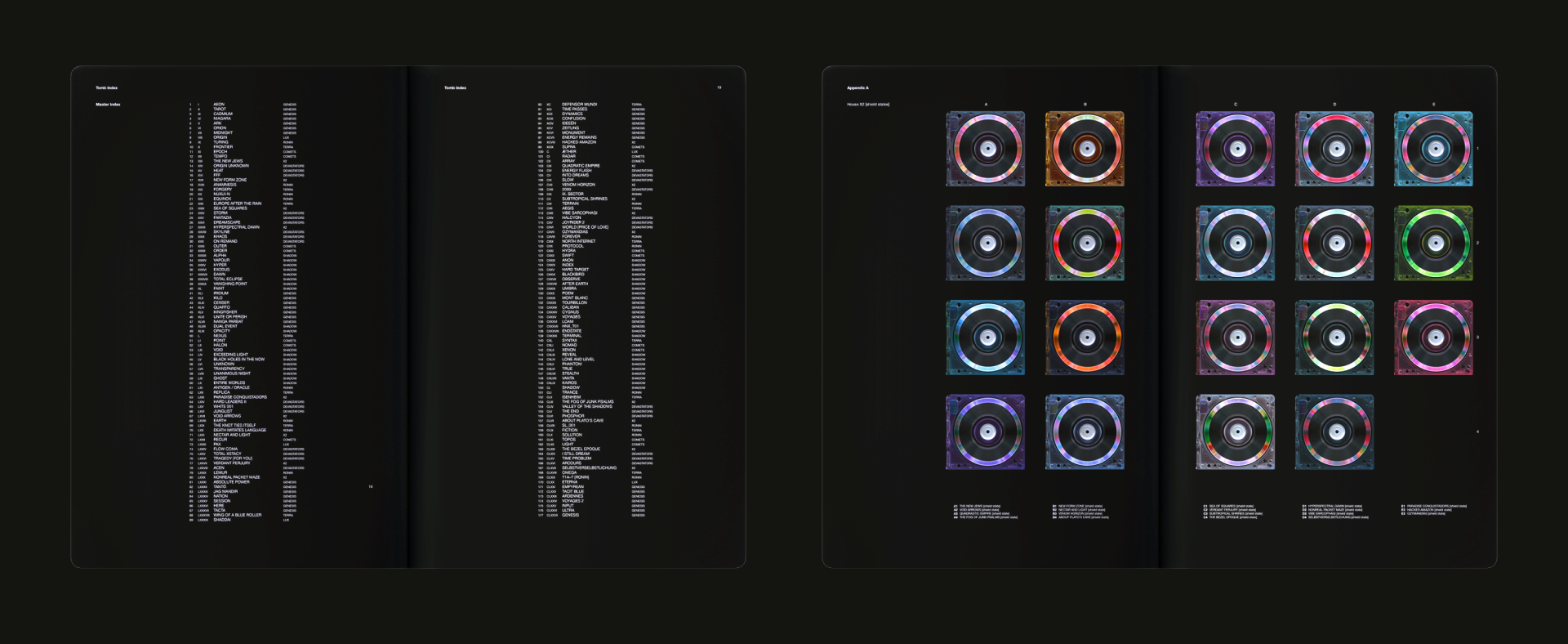
Lindsay: I'm curious to know a bit more about the technical implementation here because what you're talking about is conceptual, but you've actually pulled it off. Luke and ipfs90210, I would love to hear about the different priorities you've weighed as you're making decisions and thinking about implementation.
Luke Miles, co-founder of Context: One thing that we wanted to consider, since the project is distributed across a number of different contracts with numerous launch partners, was creating an on-chain repository for accessing all the metadata. The first seven Tombs went live last April on Foundation. The metadata contract was initialized with the metadata of all of the Tombs, even the ones that haven't been deployed yet. Some alpha: You might find some surprises in the source code in terms of names or attributes. And as the project rolls out, we're going to update this contract with the locations and the final weights and attributes of every single Tomb in the series. Once the project has been released, we'll be able to lock the contract, and then it will be an immutable archive on-chain.
Dan Denorch (ipfs90210), co-founder of Folia: I'm going to be very discreet, but there are a lot more interesting architecture and mechanics to come. What was nice with Ronin was that we just had this image, so it was incredibly flexible in terms of how we wanted to deploy it. To bring it back to the X2 series as well, having these works be so consistent in their formal aspects really allows you flexibility with not only the blockchain mechanics but also the weird, sovereign demographic aspects we're starting to see as things become more multi-chain.
Lindsay: Nic, I'm a huge fan of you and your video work. Do you want to chime in on this collaboration, and what ideas it's been bringing up for you?
Nic Hamilton, artist: I've known David for ten years, but I've never met him in real life. His work has always been particularly inspiring for me — that kind of art/design crossover. And when David reached out to say, “Hey, do you want to do something with this Tomb Series,” I was like, “Yeah, this is amazing.” Everyone's seen the Tombs around online, but no one's ever been able to really right-click save them or see them all in their entirety, apart from a few printed versions around the world. So I think the opportunity that David's given us by making these links with all these other artists and projects, and doing it on-chain, is quite inspiring — that it's really about the people.
[With the Ronin Tomb] that David's put into my contract, I'm going to turn it into 1,000 more pieces or reach out again to other people. They're MiniDiscs. We like music, I like music — let's use this [Tomb] as the seed for a mix series or something. That’s the most exciting thing to me about this: I’m looking forward to seeing what everyone does with their Ronins and how Tomb Series grows across people and projects and subcultures, and hopefully gets outside of the idea of the NFT scene into music, art, culture, writing.
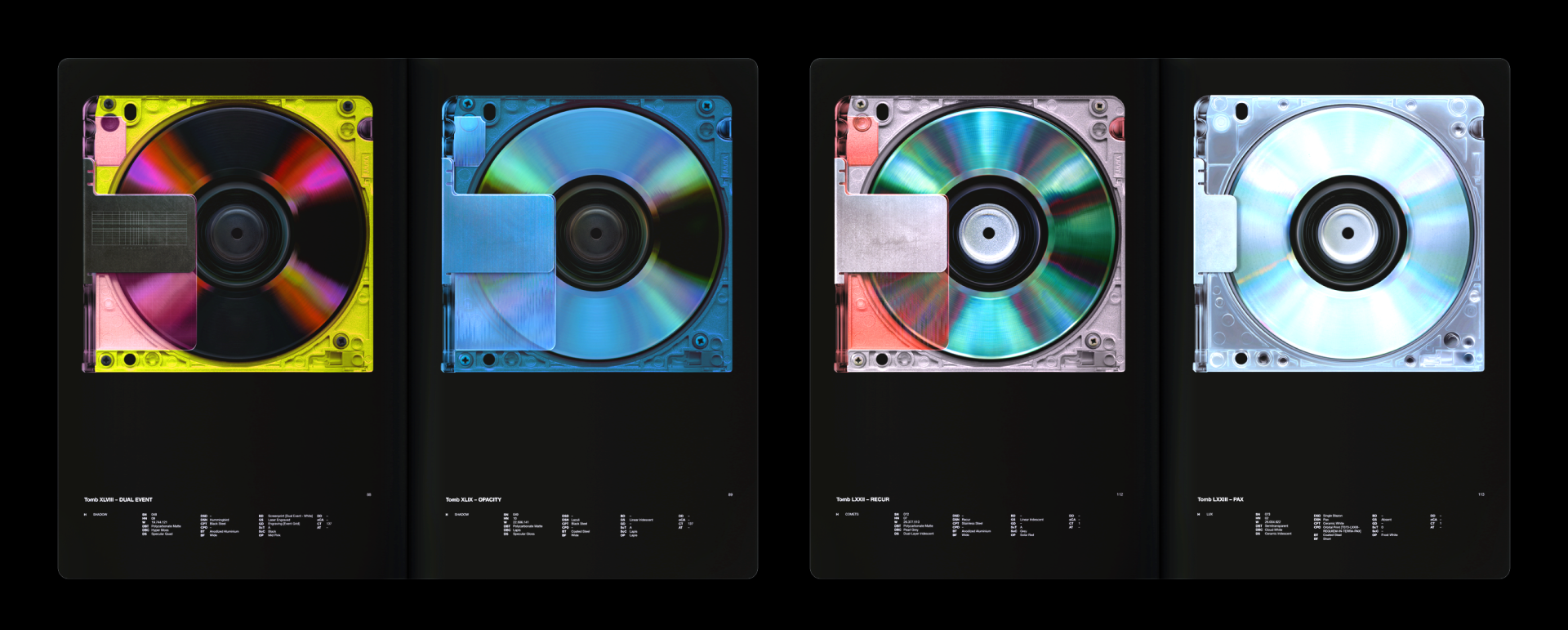
Lindsay: David, as you were conceptualizing the different houses and partners — Foundation, Folia, Zora, all the Ronin collaborators — were you coming to them with specific ideas in mind, or was it a more generative process?
David: I'm not going to reveal too much, but I think it's appropriate to give people the general outline of why there are eight houses. Why is Foundation doing a house? Why are Folia doing other houses? What does Zora bring to the table? I think I can give a reasonably succinct breakdown of why the pieces of this are designed to fit together as they do, and what people can expect in terms of [when and how they are released], what the structure is, how we are going to even access the Tombs.
There are eight houses: Genesis, Lux, X2, Shadow, Devastators, Comets, Terra, and Ronin. There are 177 Tombs, but they're not evenly distributed among the houses. Genesis, for example, has 42 Tombs, and Lux only has five. This is the opposite of the way that a lot of successful projects work. If you've got a Punk, you got a Punk. If you’ve got an Ape, you’ve got an Ape. People want to know the floor; they like to open OpenSea and be able to see the whole project. I don't want to disappoint anyone, but I'm going to be transparent and say that if that's the way you like to engage with a project, you're going to find this project very [confusing].
The Tombs are united by their name as Tombs, by the fact that they live within this 177, but they all have individual identities. The houses are all very different; they have different behaviors, they have cultures and mechanics of their own. Maybe their collectors are almost tribes of their own: Maybe there'll be some houses that don't get [along], but some that are more compatible.
I will say some things which haven't been revealed online before, without revealing too much. Genesis is the Foundation house. Seven Tombs for Genesis have already been minted online. I mean no shade to Foundation when I say this, but the model of what people thought an NFT was last April — everyone in this audience knows the current understanding of the potential of NFTs has changed radically since then. The idea that an NFT is a standalone, one-of-one piece of art placed on the blockchain is now quite quaint and backward-looking. That said, the Genesis Tombs are almost interesting in the context of the other houses, because they do not adopt contracts with these complex, dialogical mechanics with the other Tombs. They're almost fated or cursed to continue with the way that house started. I actually went through long rounds of discussion with Foundation to insist that they continue to be minted in the way those first seven were minted, even though Foundation has moved on from how work was launched a year ago.
Lux is a Folia house. There are five Tombs in Lux. It's by far the smallest house, and it's a bit of a maniac house, to be honest. They are kind of very remote and almost aloof, these Tombs. For me, they're a chance to explore ideas of the sacred, of the divine, of language. These works will be put live on-chain, with Dutch auction mechanics. Some of the Lux will start impossibly high; at least one of them will start on a total in terms of ETH that exceeds the sum of all plausible capital on earth. So it will be trillions of ETH, but it will be calculated to clock down at a huge velocity so that it will be a mechanical challenge for anyone to figure out how one might even bid on some of the Lux Tombs. They will be notoriously hard to buy.
Lindsay: The text chat is freaking out right now.
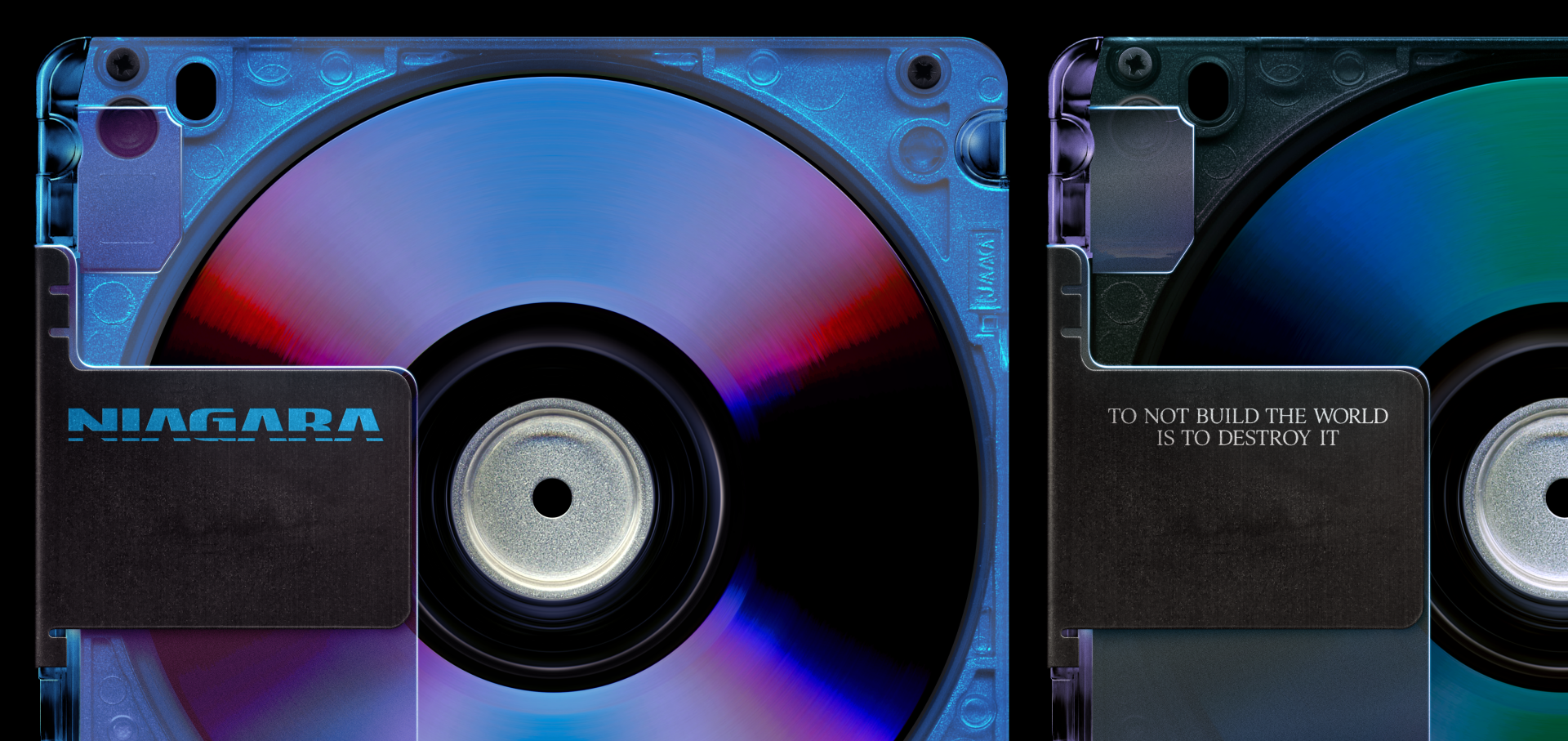
David: I'm not gonna say too much about it, but I imagine that you may have to engineer custom tools to buy something like that. It's like an extreme “catch a falling knife” problem. If you want to get that Tomb, you're going to have to calculate maybe the hour in the day, the minute in the hour, the second in the hour, where it's even in a plausible window of availability.
X2 is another Folia house. People may be familiar with my “Exodus 2” project on Folia: there are 19 stanzas of that poem, and there are 19 Tombs of X2. I'm not going to say much more, other than I think you can put together very quickly that there may be some one-to-one alignments there, and therefore some custom-engineering possibilities regarding what might happen if parts of one project are aligned with parts of others.
Shadow is the next house on the list. The Tombs in this house are not launched on the Ethereum chain; Shadow will exist on a different chain. And there will be, again, spooky action at a distance, custom effects, and mechanics where Tombs in that house may have effects on Tombs in other houses, and Tombs in other houses may have effects on those Tombs. It has a quite hilarious, amazing mechanic that I cannot wait to reveal. It’s one that affects the entire house, and therefore the different owners in Shadow may need to cooperate or collaborate in certain situations. Again, I apologize for being cryptic.
Devastators is the Zora house. Conceptually, Devastators draws just very directly from the role that the historic object of the data disk has played — it was traditionally a carrier of music. And it will also be paired in a really exciting way with Zora’s Ronin. There are 29 Tombs, but the house will lead out before those 29 Tombs are made public. The first thing that will launch is Zora’s Ronin. Zora’s Ronin has a very exciting mechanic and function: I understand the idea of owning a one-of-one piece, when there's only seven, can be quite prohibitive — and we thought about doing something that offers ownership or access in a different way.
Comets I'll cover very quickly — it's a Folia house. I'm actually not saying much about Comets at all — just that we're going to really struggle to find them. A comet is only visible for a few days a year, maybe once in a large period — Tombs in the Comet house may spend a lot of time elsewhere. How you even find out where they are will be a bit of a treasure hunt.
And then finally, the only house that people don't really know about is Terra. It’s quite clear that at the heart of this project is a hyper-object. Some people [of a certain age] with nostalgia for the idea of a MiniDisc — they may see it as a marker that points to a physical object that they recognize, that had value to them. But there will be others who enter this space who will hopefully identify with the digital hyper-object, the work on-chain, the idea of [a tomb of the MiniDisc]. I have always seen these Tombs as a kind of vanitas or memento mori if you’re familiar with those terms from art history. It's the way that an artist puts a skull in still life, for example. It’s a nagging reminder that even art, even an image, cannot beat the passage of time, the fall into ruin.
I think part of the reason the project is successful is that MiniDiscs are beautiful things to look at and think about — they're such a benchmark of what high-tech felt like in the past, and yet they are obsolete today. We're standing here on the threshold of Web3, of a world on-chain. We can talk about how the blockchain is forever, we can talk about building the semi-permanent foundations of the world ahead of us — and yet, we're surrounded by big flashing warning signs, reminders that even beautiful, functional things sometimes don't last very long.
Terra has 14 Tombs in it; these will be reproduced physically at a very large scale. Those prints will be one-of-one, and there will be NFTs of Tombs in Terra that will be one-of-one. I [will drop] an alpha here, but I will try to be both informative and oblique: You will not be able to bid on the NFT unless you activate a physical component of that print. [People] are going to have to coordinate globally, and they are going to have to send someone to go and see that print in real life to drop the bid. There will be a very strange set of circumstances individuals will have to go through — and I’m interested in that journey.
Eric: I think because it's going to be on so many different platforms and protocols, it's really going to pressure-test what people like to call “valuable” in this space. Because it's such a new field, there's actually a lot of theater that goes around when you ask someone what they value in an NFT. They'll say things like, “Oh, it really pushes the medium. It's not just a JPEG. It's really generative. Oh, there's a smart contract involved.” In this case, it's going to be interesting to see, with an NFT on Zora versus an NFT on a layer 2 like Polygon — will that command a different price point? Do you value the print or the NFT more? I think we're going to see how these things play out [with this project] — not only now, but over time, as different network effects evolve and different platforms change.
With all the emphasis on what smart contracts and on-chain data can do, I think it’s also going to be interesting to see what happens when an artwork is technically on somebody else's smart contract, and there's actually no link to the original smart contract, and the only real connection is the semantic and symbolic connection where it’s human-based. We're going to see a dance of interactions and transactions between the affordances and limitations of each protocol, each medium, and how that actually translates to cultural and monetary value. If something is completely hand-drawn — maybe there wasn't some fancy code to make it generative, but [the artist] put their labor and sweat into it — what is more valuable? What is less valuable? All of these things are going to result in learnings that we can take and put back into our own work.
Lindsay: We're hearing some big talk about the Zora house. Jacob, can you tell us more about how you’re collaborating with David?
Jacob: We'll be exploring the boundaries of ownership and what that means, and just how scarce the canon is with 177 Tombs. How can we explore what massively and rapidly expanding ownership around these could be, illuminating the relationship between original and derivative? I feel like that's simultaneously the most accurate and most vague way I can say it.

Yi, artist and collector: Hi, I had a quick question. I've been studying my Tomb, and I noticed that with every Tomb mint, every Tomb has a different weight. I was wondering if someone could illuminate what these weights indicate, or what they mean because this keeps me up at night.
David: That's a wonderful question. All the Tombs have attributes that are different from the kind of standard OpenSea attributes you might see in a series in that they can't really be used to calculate rarity. The weight is the number in bytes of the file size of the object that is placed on the chain, and every Tomb has a weight. I learned a lot about how the PNG file compression algorithm works, and you start to see how different attributes, features, and visual characteristics can lead to very heavy Tombs, [versus] much lighter ones. I can't wait for people to see the whole set, because when you see one that’s like a Moby Dick, it's like “Oh shit, this one's 34 million.”
Sky Kawano, graphic designer: So obviously, each of you has a personal story, a unique identity for yourself, and a public and private-facing persona. How do you see your IRL lore as individuals combining with your own Tomb world lore? Do you see these becoming more integrated, let's say, over ten years, 20 years, past your lifetime?
Lindsay: I would love to toss that question first to Itzel because you were talking about these projects as archives and documentation of collaborations over time.
Itzel: Yes. Nothing will erase the fact that we're here today and are witnessing what's happening with Tombs. We're [using these tools to] create things that are a part of us, that are our memories, and that are becoming more than an asset that someone can flip. I love every project that makes it difficult for collectors to even think about that. It’s like this game [euphoria that we get], but it's a game that doesn't have an end. Just by being here today, I know that I'm part of this. Being part of a Tomb and having your own character in this game that David created I think is really special.
David: Sky, I want to say thank you for that question. Obviously, there’s quite a loaded word at the heart of this project: “Tomb.” And it's really beautiful that you brought up [what this means] even after we're gone. I do think that one of the most straightforward and beautiful things that art can do is preserve language without having to preserve the speaker. One day the speaker will pass on but those works may remain. That's poetry, that's text, and that's at the heart of what the promise is, I think, for a lot of people who create work on-chain.
Lindsay: I'm getting a couple of DMs from people who just bought the book, and they want to know what's coming up next. David, after they receive the book, what's next in the project?
David: The reality of the book’s production means that we will not be able to ship the book for, realistically, at least six, most likely eight, weeks. So you can expect to get them in early April. Between now and April, we are going to start the rollout of the first house, Genesis. In mid-April, you'll have a Tomb Index in front of you. All of Genesis will be on-chain, and the first seven Tombs [of] Genesis will be potentially about to go live at auction. We're also going to start the process of revealing how Lux, Shadow, and some of these other houses are going to roll out — where you might be able to view the works, where you might be able to bid on the works.
In the meantime, there's a Tombs Discord that we're going to build out a little bit more. This project is one where I'm more than happy for people to approach it from a [group] perspective, rather than necessarily an individual one. People talk about the idea of going on raids in games or having to team up to defeat a boss or find the legendary item. I love that there may be modes of discovery in this project which almost feel like questing.
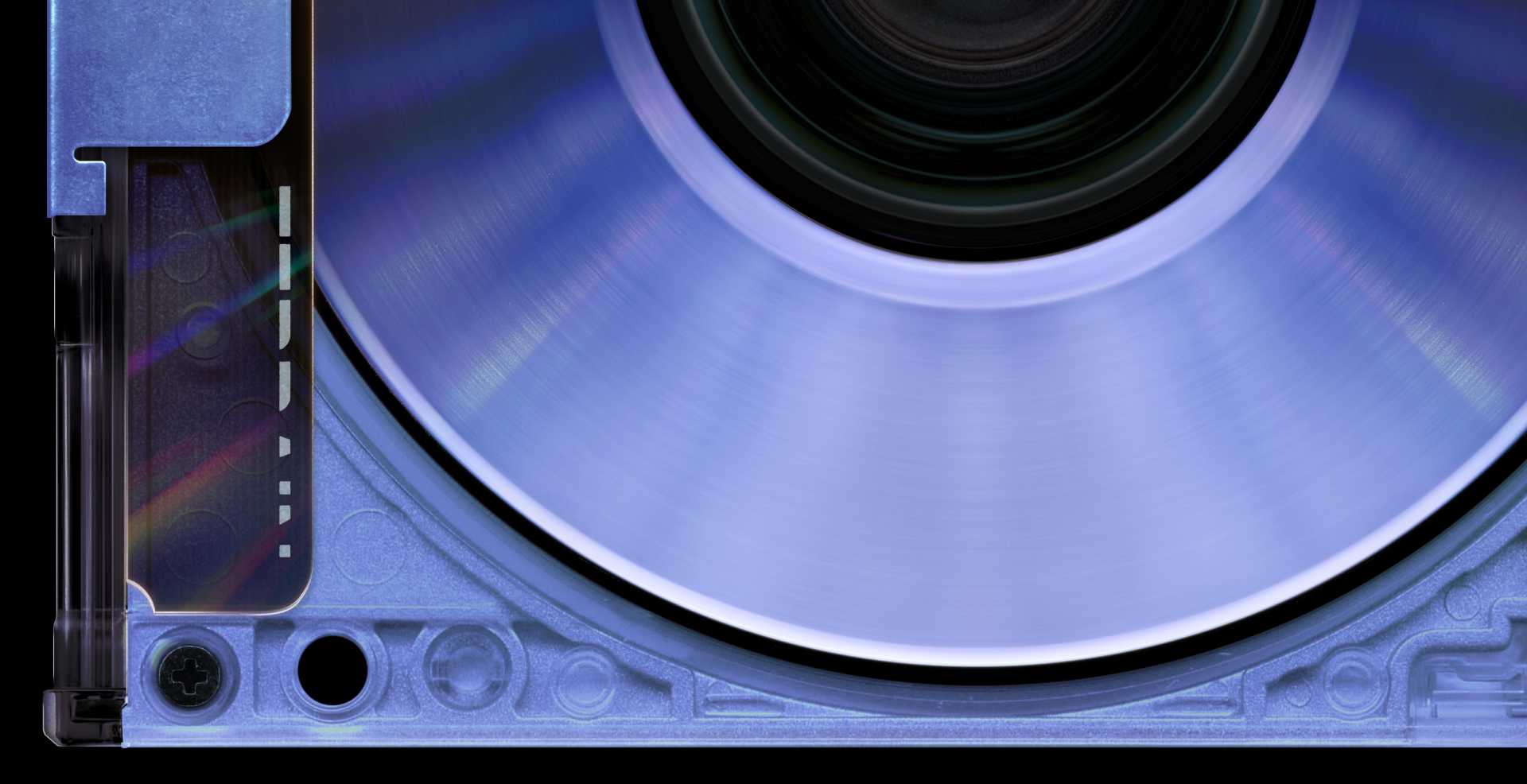
Images courtesy of David Rudnick
Photo of David Rudnick courtesy of Georg Gatsas



